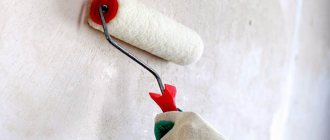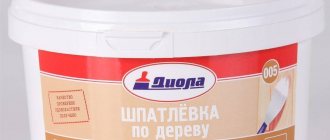Currently, when arranging buildings, various options for finishing materials are used. Basically, the purpose here is to extend the service life of structural elements. To treat a wooden surface, such a common treatment option as drying oil is often used. A well-known and sought-after composition that significantly extends the service life of wooden structures, however, few know that this substance can be prepared (cooked) independently from vegetable oil. In this case, we will consider how to make drying oil yourself from sunflower oil.
Classification
Drying oils are divided into three large groups: oil, alkyd and synthetic.
Drying oils are natural, semi-natural and synthetic. Natural drying oil. It contains natural oil up to 97% - flaxseed, sunflower, soybean, etc.
The oil is filtered and during heat treatment it can undergo air-oxygen purging or not. Drying oil after air-oxygen blowing was called oxidized; without it, it was called polymerized. The drying oil obtained in this way lost its transparency, thickened and acquired a dark color. Salts of cobalt, lead, strontium, iron, and lithium are used as driers. But the content is small (up to 3%).
Drying oil oxol
Oxol has a natural oil content of up to 55%, the other components are solvent and drier. White spirit is used as a solvent - up to 40%, 5% is a drier.
Oxol has an unpleasant odor and can remain for some time even after drying. Oxol drying oil made from linseed oil is considered to be of high quality; oxol from sunflower oil has worse properties compared to linseed oil. Oxol is used both in interiors and on building facades, to cover garden furniture.
Combined drying oils
This is a solution in white spirit of a mixture of oxidized oils with dehydrated oils and drier. The combined drying oils include drying oil K-SKDP, which is a product of modification of sunflower drying oil with low molecular weight rubber SKDP; naphthopolymer drying oil - 55% solution of carbon-water resin in white spirit.
Alkyd drying oils
Alkyd drying oils are obtained by processing vegetable oils. Drying oils are classified according to the type of alkyd resin -
- glyphthalic
- xiftaleva
- pentaphthalic (made from sunflower, soybean and camelina oils; PF-K - using castor and tung oils).
Synthetic drying oils
Synthetic drying oils are solutions of shale oil, salts of naphthenic acids and some resins in organic solvents. So far, drying oils include: slate, synthol, ethinol, polydiene etc. Of these, only slate provides a weather-resistant film, therefore it is recommended for outdoor work. It is not used for interior painting because it has a strong odor. Drying oil ethinol forms a shiny hard film that is resistant to alkalis, acids, and water, but it is not weatherproof. It is used for anti-corrosion primer and as an additive to other drying oils (no more than 15%).
Soviet-made synthetic drying oils took a long time to dry, were poorly maintained on the surface, and over time cracked and crumbled. Synthetic drying oils are the most toxic in quality. There is a ban on their use in residential premises. They are used only for outdoor work, with restrictions - in temporary premises for adults, but with good ventilation.
It is advisable not to use them at all in rooms for children, the elderly and teenagers.
How to dilute thickened drying oil
Drying oil contains oil and driers (calcium, lead or manganese oxide). Polymerization of the oil occurs by heating to a specific temperature. During the cooling process, any oil thickens, so it became necessary to dilute it to the required consistency. The choice of solvent is influenced by the presence of a compound or another oil:
- To dilute semi-natural drying oil, use turpentine or white spirit.
- Artificial mixtures are diluted with a solvent.
- Real drying oil hardly thickens, but if this happens, you need to turn to the help of white spirit or turpentine. It is considered incorrect to dilute the mixture with kerosene, gasoline or diesel - such a composition, in addition to a very high fire hazard, can be harmful to the body, so it cannot be used in residential premises.
Diluting artificial drying oil with solvent 650 Tips from professional craftsmen! First, try diluting a little drying oil to be sure that your actions are correct. Pay attention to the reaction of the mixture and select a good option that is most suitable for your case. You need to dilute it to the consistency you need. Thinner services are needed to:
- make the drying oil comfortable to use;
- spend less money on purchasing a new mixture;
- use drying oil for a long time.
Drying oil for wood
Drying oil for wood is in demand today no less than in times of a total minimum of finishing materials - all the delights of oil paints, our older generation remembers them well; but in terms of horrors, you can also remember - when there was no choice, the walls were sometimes painted with nitro enamel (durable and ultimately beautiful, but you could breathe in oh-oh-oh). Drying oil for wooden cladding, frames, decor and other elements is a time-tested classic, both in the old days and today. Drying oils are distinguished by composition and properties, and there are only three main types of drying oils - natural drying oil, oxol and composites.
Natural drying oil
Natural drying oil is based on rapeseed oil (the cheapest), as well as sunflower, hemp or linseed oil. This composition indicates good environmental friendliness of the material. Natural drying oil has the least amount of adhesive (drier) - 3%; this additive is needed to make drying oil dry faster (everyone knows that this is a long process and cannot be compared with modern quick-drying paints). Natural drying oil is used to treat the inside of wooden walls of log houses, to dilute thick paints, to decorate furniture and various wood products. Natural drying oil is suitable for use in atmospheric conditions, but it is too expensive, there is oxol for this, and for non-critical structures on the street you can take a cheap composite - cheap and durable, although the smell is completely chemical, with a clean, almost imperceptible aroma of natural drying oil , corresponding to GOST - no comparison. (New standard for drying oils GOST 32389-2013, updated, but containing useful information GOST 7931-46)
Drying oil oxol
Oxol is also regulated, both production and composition (GOST 190-78). Application: indoors and outdoors, on wood and plaster. Oxol enhances adhesion and protects wood from bio-negativity. There are only 55% of natural oils in oxol, 5% of drier, plus solvent - gum turpentine, white spirit and others - in a volume of up to 40%. Oxol dries much faster than natural drying oil, and is not so expensive. Application of oxol:
- Impregnation of plastered substrates indoors and outdoors. A layer of drying oil slightly levels the walls, resulting in a reduction in the consumption of finishing paints and varnishes.
- To “revitalize” thickened oil paints, for dilution. There is more paint, which is economical, and the quality of the paint is no worse. Of course, only oil-based paints can be diluted with oxol.
- Never used for floor impregnation.
Based on their composition, oxol is divided into two types: Oxol B and Oxol PV. Both types of oxol are suitable for diluting paints, enhance the adhesion of paints to wood (plaster), and protect against harmful bio-factors. But Oxol PV is used only indoors, and Oxol V is used both indoors and outdoors. The secret is in the composition: Oxol B contains hemp and linseed oil in an amount of 55%, and Oxol PV is often produced using light petroleum-polymer resins, which is a synthetic analogue of natural oil. However, there are still manufacturers who use quite rare oils - grape, camelina, corn, safflower, and it is logical to use such drying oil for decoration, furniture, and handicrafts.
Drying oil combined
Composites made from drying oil are cheap and regulated by technical specifications, which already speaks for itself: the composition contains many petrochemical by-products, and most likely there are no natural oils at all. It is used only outdoors and preferably for the protection of non-residential buildings. Even if you want to save money, you don’t want to saturate a wooden gazebo with drying oil-composite - it has a very strong and persistent “chemical” smell. But the protective properties (against fungus and mold, beetles, rodents and atmospheric moisture) are excellent.
Characteristics of drying oil
Drying oil is a solution in liquid form, during the application of which a thin protective film is formed due to the presence of vegetable oil that has undergone thermal and chemical treatment. Oils can be replaced with alkyd resins. Drying oil is used when working with putties, primer mixtures, paint and varnish products, and oil-based paints. It is absorbed into the wood and protects it from rotting, damage by parasites and insects. Very often it becomes saturated and the next time you work with it, it needs to be brought to the desired consistency. The consistency comes from thickening the oils. If drying oil is placed in a saucer and placed outside, it will harden in a short time.
For the production of drying oil, for the most part, oils containing linoleic acid are suitable. Thanks to it, drying oil dries quickly on the surface. The result is a tough but pliable crust. A lot of linoleic acid is contained in flaxseed oil (80%). A little less - in hemp. Poppy, sunflower and nuts contain 50 percent linoleic acid. When using natural products, the production process of drying oil is delayed for many months. Nowadays, this process is accelerated thanks to heat treatment. When the temperature rises, the elements that inhibit drying decompose. At the same time, liquids oxidize at a high rate. Manganese is added to the oils, allowing the mixture to thicken after a day. Flaxseed drying oil has a light, almost light-transmitting appearance. Hemp oil gives a dark tint. Despite the difference in appearance, its drying period is similar - about a day. The presence of sunflower oil does not allow the drying oil to harden quickly and it does not tolerate moisture well.
Real linseed oil Drying oil dries not only on the surface, but also in the container. For the most part, manufacturers recommend plastic or glass containers. This dish prevents the drying oil from thickening quickly, but the process itself does not stop. As soon as the lid opens, oxygen gets inside. If a bottle of drying oil is consumed in one working step, great. However, there are options for the gradual use of such a composition. There is a need to dilute it. There are several options: white spirit, turpentine, castor oil, organic acids, alcohol, paint solvents are added. The rule is the same for absolutely everyone: take 10 parts of drying oil and 1 part of solvent . Experiments should be postponed. Drying oil is a flammable composition, and the presence of untested solvents can lead to bad consequences, including a fire.
Features of choice
When choosing the appropriate type of drying oil, you need to pay special attention to some nuances:
If possible, assess the degree of transparency of the liquid in the package. Natural drying oil, as seen in the photo, has a dark brown color and has no sediment.
Read the label carefully. It usually contains detailed information about the composition of the liquid, manufacturer, instructions for use, and so on.
You should definitely check the availability of a certificate of product quality, especially for natural drying oil.
High-quality drying oil is a transparent liquid, without sediment, pungent odor or foreign impurities. The color palette of drying oil is quite scarce; the color of the liquid varies from light brown to dark brown.
In order to achieve durability of the treated surfaces and significantly simplify the processing process, it is necessary to correctly select the optimal drying oil option. You can completely cope with the choice yourself, the most important thing is to take into account all the necessary parameters
How to deal with drying oil thickening
Reading the composition of any of this useful mixture, as a rule, you can notice the following components:
• any quickly drying oil; • drier in the form of manganese, lead or calcium oxide.
Drying oil is made by polymerizing oil, as we all know. Polymerization of the oil occurs by heating it. Considering that oil tends to harden after heating, people very often encounter the fact that this mixture thickens, which makes it impossible to use it for various purposes. In order for it to be used for its intended purpose, when thickening, the drying oil must be diluted. Typically, the following thinners are used to dilute it:
• White Spirit; • turpentine; • solvent.
Depending on the type of this mixture, one or another diluent is used. So, in order to dilute the semi-natural look, one usually uses either white spirit or turpentine. In order to dilute the synthetic type, it is recommended to use a solvent. It is generally not recommended to dilute the natural look, but if you still decide to do this, then it is better to do it with turpentine or white spirit. In addition, experts do not recommend diluting this mixture with liquids such as gasoline and kerosene.
In any case, experts recommend diluting a small amount of the mixture first to see what happens to it after dilution. By observing the reaction of the mixture after adding one or another thinner to it, you will be able to draw any conclusions about which thinner is most suitable for your drying oil. And then you can already use these thinners to achieve the consistency you need.
Using thinner for drying oil, you can:
• extend the service life of your drying oil; • save money on its purchase; • achieve good results from its use.
In conclusion of the article, we can say that in our time drying oil can be used for various purposes, since this mixture has certain properties that are excellent in the construction field of human activity. But one can also note the disadvantage of the mixture, namely its thickening property. But, as we have already understood, this problem can be completely solved with the help of various thinners.
What it is?
Drying oil is a thick, oily liquid of predominantly brown color, consisting of a mixture of different components, intended for painting wood and preparing plastered surfaces for painting, and is also used as a solvent for oil paints.
Like any other product intended for processing, drying oil consists of basic and auxiliary substances. The basis of Oxol drying oil is vegetable oil, the share of which is in the range of 54-55% of the total mass.
Different oils can be used to make the product: flaxseed, hemp, sunflower, grape, soybean, corn or camelina. The base contains either one type or a mixture of several oils.
The share of additional components in the composition of "Oxol" accounts for 45% of the total mass, of which 40% is the solvent (white spirit is most often used), and the remaining 5% is driers. Each of them has certain properties that affect the composition as a whole.
The solvent gives the drying oil the desired consistency, and driers contribute to the rapid drying of the composition on the surface. Dryers are salts of various metals, or, more precisely, compounds of iron, cobalt, lead, lithium, strontium and many others with organic acids.
The composition of drying oil is not accidental; it is thanks to it that a stable film-forming coating is formed on the surface, which reliably protects the tree from the penetration of parasites that destroy the wood structure, and moisture, the influence of which leads to rotting processes. It not only performs a protective function, thereby extending the service life of the wooden surface, but also helps reduce the cost of paints and varnishes applied over the drying oil coating.
In order to understand how and due to what a film is formed on the surface, it is necessary to consider the principle of operation of drying oil, based on the properties of the components. Many types of vegetable oils used as a base are capable of thickening under certain conditions (oxygen, heat, light), and when applied to the surface in a thin layer, they can polymerize (dry out).
The formation of a semi-solid mass occurs due to polyunsaturated fatty acids present in some oils of plant origin. The rate of hardening on the surface is directly dependent on the size of glycerides of unsaturated fatty acids and such an indicator as iodine number. The higher the percentage of fatty acids in the oil and the higher the iodine value, the faster the polymerization process occurs.
But the natural oxidation process occurs slowly, and therefore drying oil is subjected to heat treatment along with the driers added to its composition. Heating of this composition leads to the decomposition of substances that slow down the formation of the film, and due to the presence of metal salts, the oxidation process occurs faster.
Drying agents affect the composition not only during the drying process, but also after it. It lasts as long as the layer remains on the surface; their share should not exceed 5%; a higher percentage of their content in the composition leads to darkening and then destruction of the film coating.
The formation of an elastic film on the surface occurs, as a rule, within 6-36 hours. This time difference is due to many factors: composition, preparation technology, presence of additives. Almost all drying oils known today take about a day to dry.
Breeding mistakes
It is not recommended to use gasoline, kerosene or diesel fuel as a solvent. Drying oil can be diluted, but the fire hazard increases sharply. In addition, the application of such a composition in residential premises is prohibited.
Immediately after finishing work, you must wash all tools with soap or other detergent. Otherwise, it will end with polymerization (hardening) of the material and damage to the instrument.
To properly dilute drying oil, you only need to know its types and properties. Knowing all this, you can easily select one of the existing thinners. You will learn more about it and its dilution from the written article.
Today, as a rule, you can see a huge amount of building materials that are usually used in any construction of various premises, as well as in finishing work in them.
In addition, there are also many different mixtures that people simply cannot do without, usually during renovation or construction of a room. This necessary mixture also includes drying oil, which is now used in construction for a wide variety of purposes.
Thus, its most popular use, which has been known since ancient times, is the coating of wooden products for their high-quality impregnation. By impregnating wooden products with drying oil, people protected them from rotting and the negative effects of wood parasites. Previously, people could make this mixture themselves. However, now preparing it yourself is also not a problem. The most important thing you need to know in preparing this mixture is how to properly dilute the drying oil, and what ingredients are needed for this.
Nowadays, drying oil is used not only for impregnating wooden products, but also in enterprises that work with a variety of paints and varnishes. Thus, using this mixture you can dilute the paint, thereby giving the paint the property of quick drying. Thanks to the mixture, the paint adheres better to the surfaces that are painted with it.
How to use drying oil to impregnate wood
With the help of drying oil you can greatly reduce the consumption of paints and varnishes and because of this it is used in the form of a primer mixture.
It is very easy to apply and does not require special knowledge. Simply apply it to the surface using a brush, natural rag, spray bottle or roller and let it dry.
There are many design options, but the most relevant are:
- Hot impregnation method. This procedure should be carried out in a water bath and is primarily suitable for impregnating non-bulky parts. To do this, take wood, place it in a container with a heated solution and soak it in it for about 6 hours. After this, the part is removed and dried for 4 to 6 days until completely dry. If you initially add about 2% of the total volume of red lead into the solution, the material will dry in two days.
- A mixture of drying oil and kerosene. To do this, take drying oil for wood and kerosene in equal proportions, mix it and keep the wood in this solution. This method can be either cold or hot. The only difference is that with hot impregnation, a few hours are enough, and with cold impregnation it will take a day. The coating dries after the procedure for no more than 2-3 days.
- Drying oil and bag. In order to treat wood with drying oil using this method, you should fill the bag with drying oil about 1/10 of the way. After this, you need to put the wooden element into the bag, wrap it and glue it tightly. The average impregnation time is 3-4 hours. After a while, the bag needs to be opened and since the wood should be completely saturated, the bag should be refilled. This is done until the part stops absorbing.
Is it possible to dilute drying oil?
As soon as oxygen enters an open container with drying oil, it begins to thicken. It is very difficult or completely impossible to work with such a composition. Most experts believe that during the dilution process, drying oil loses its original characteristics. However, the opinion is controversial, and craftsmen again and again resort to the help of thinners for drying oil for the purpose of its subsequent use for its intended purpose.
Before adding diluents to drying oil, you should first become familiar with its composition. The mixture can be real, artificial, semi-natural, therefore, the approach to diluting them is very different. It is believed that the hardest thing is to return the required consistency of the artificial mixture.
Features and rules of use
This composition belongs to the category of quick-drying and quick-hardening substances, and therefore requires compliance with certain recommendations when working with it:
the mixture is sold in a ready-to-use form, but before using it directly, it is recommended to thoroughly mix the drying oil so that the active ingredients are evenly distributed throughout the liquid; impregnation can only be carried out on dry, clean and pre-degreased surfaces; it is necessary to apply the solution in a fairly thin layer, using a wide brush or small roller; the air temperature during work should not be below 15 and above 20 degrees, and humidity - no more than 75%; each layer of drying oil dries for about a day, so each new application should be carried out no later than 24 hours; It is very important, upon completion of work, to remove from the room all tools and materials that came into contact with drying oil;
- unused mixture can be stored for no more than 12 months in a hermetically sealed container;
- During work, it is recommended to use a respirator or protective mask and rubber gloves;
- if the composition gets on the skin or eyes, it must be thoroughly washed off with plenty of water;
- when carrying out work indoors, it is imperative to ensure access to fresh air;
- drying oil "Oxol" is highly flammable, so it should be used as far as possible from open sources of fire;
- when purchasing this product, you should definitely ask the seller for certificates of quality, safety and compliance with GOST requirements;
- This composition can also be used for sealing small cracks. To do this, drying oil is mixed with sawdust in equal proportions and applied to the surface to be treated using a spatula.
Following these simple rules and recommendations for using drying oil will allow you to process wooden and putty surfaces as simply, quickly and correctly as possible, and will also ensure a positive result.
Drying oil oxol
The composition of semi-natural drying oil (oxol) includes natural vegetable oils and solvents that have undergone long-term heat treatment. Its composition is dominated by solvents, which is why the product has an unpleasant specific odor, which sometimes persists even after drying on the surface being treated. The color of the drying oil of the existing composition is light brown or brown. Has the property of drying quickly. The main task of this type of drying oil is to protect wooden surfaces from parasites and moisture; after covering the products with it, a protective film is formed. It has also become widespread in the paint and varnish industry; it is used in the production of paints and for diluting them in the process of performing interior and exterior painting work. The surfaces of products primed with such drying oil acquire a good shine, high strength, and become water resistant. In terms of cost, drying oil oxol is very economical and much more profitable than natural options.
Using semi-natural drying oil - how to apply the composition?
Since Oxol has a pungent odor and belongs to the group of toxic oil compounds, we adhere to some mandatory rules when working with it. Firstly, we carry out the planned painting activities wearing a respirator, rubber gloves that protect our hands, and thick overalls. In this case, the risk of poisoning by drying oil vapors and contact of its drops with the skin is significantly reduced. If, nevertheless, Oxol lands on a person’s skin, it is necessary to immediately wipe it off with a clean rag. After this, thoroughly wash the damaged area with soapy water.
Secondly, work with drying oil indoors is allowed only if there is effectively functioning ventilation. The immediate scheme for processing wooden structures with Oxol looks like this:
- 1. We clean the product from the old coating (varnish, paint, etc.). We remove grease stains, dust and other contaminants from the surface.
- 2. Dry the cleaned structure. If there are significant roughnesses on its surface, we additionally sand the wood.
- 3. Open the jar of Oxol. Mix the composition well. If you are using a container from which the composition was taken earlier, add a little white spirit to the jar. Then we can easily stir the thickened mass.
- 4. Using a brush or roller, apply drying oil to the product. Make the layer not very thick.
- 5. We wait 24 hours. Then we re-paint the product with Oxol. If it is necessary to apply a third layer, wait another day. And only after this we treat the surface again with the described composition.
It is recommended to carry out work using oil compounds at air temperatures above 15 ° C, optimally at 22 ° C. That's all the wisdom of using Oxoli. Good luck!
How to dilute drying oil?
It should be noted that in the production of drying oil, heating or boiling is used, during which increased dissolution and, accordingly, oxidation of certain ingredients occurs, which leads to the formation of a homogeneous liquid drying oil.
So the boiling method can actually be partially useful. But of course, it is better to simply dilute the old drying oil before boiling, and then when boiling, a more suitable drying oil for work is formed. Here's an example of what your drying oil might look like after long-term storage.
Now about how to dilute the drying oil.
Everything is simple here. There are a lot of special solvents and thinners for oil paints and you can take any that is commercially available. You can also use castor and flaxseed oil.
You can also use solvents like white spirit.
The picture shows nefras or solvent 646. So this is one of the names of white spirit. There are of course others. And now I will add that nefras is low-grade gasoline or a mixture of heptane and hexane, which is also called galosh gasoline.
So gasoline, but without additives, is also suitable.
Additional Information
All types of oils can be used to treat wooden surfaces
Particular attention should be paid to the place of application - drying oil for external use or for internal use.
Consumption
When treating wooden surfaces with drying oil, the following stages of work are distinguished:
- Preparatory work. It consists of preparing the surface for applying drying oil. It should be cleaned by hand from dirt and dust, degreased and any moisture removed.
- Application. A brush with softer bristles is best for application. If the amount of work is large, then a roller is used. The oil is applied generously so that the wood fibers are well saturated. If deep impregnation is required, use hot drying oil. To process one square meter of material you will need 130 ml of drying oil. Usually 2-3 layers are enough, but it all depends on the desired end result.
- Drying. The normal temperature for drying is 20 degrees. In this case, it is desirable to have a complete absence of drafts in the room. On average, wood treated with drying oil dries within 24 hours.
Paints and enamels are often very thick in consistency, so painting a surface with them can be difficult. In such cases, the paint is diluted with drying oil. It is added until the desired thickness is achieved. Thus, this method allows you to reduce paint consumption and save money.
Selection of drying oil
When buying drying oil you need to be careful
You should pay close attention to the color of the drying oil and packaging. The label must indicate the composition, GOST or TU number of the product
GOST indicates state level standards. It is advisable to check the certificate of conformity and hygiene certificate. The packaging must indicate the place and date of production and instructions for use.
A high-quality product does not have external mechanical damage to the container and does not contain sediment. The smell of the product, the weaker the better.
Types of drying oil and how to dilute them
Drying oil varies in composition and processing method, and therefore it is divided into the following varieties: Types
What and how to dilute
The shade of the mixture is brown or light brown. Dries very quickly. The main property of the mixture is to prevent parasites and excessive moisture from damaging wood products. After applying such drying oil, a thin protective film appears, preventing the wood surface from adverse effects. It has found its own use in the paint and varnish industry, it is part of paints, and is used for diluting them when carrying out exterior or interior painting work. Priming with such drying oil allows the surface to acquire an attractive shine, become durable and moisture resistant. Much more economical than the previous option.
It is not very easy to dilute oxol due to the fact that it is rarely possible to preserve its original properties and qualities. Sometimes the result is disappointing, so you need to approach this issue with great attention and watch the reaction when taking actions. For dilution, it makes sense to use white spirit, turpentine, nefras, and other artificial liquids.
Artificial drying oil is the most inexpensive, and its composition, appearance and technical characteristics can vary significantly. What connects them is a sudden, pronounced aroma that may not fade even for years, and a very long drying time - from 24 hours. At the same time, the area of their use is limited. Very often, such mixtures are used for diluting paints and enamels for exterior use or for diluting other drying oils. They are highly not recommended for indoor work (painting floors, household items, etc.). In addition to the fact that they are poorly impregnated, they are also toxic and therefore dangerous to health.
If the product label already states which solvent is most suitable for this mixture, then it is necessary to use it. Since composite mixtures come in different compositions, some solvents can, on the contrary, cause harm. In general, “resurrecting” artificial drying oil can be very difficult, even with the help of solvents, so sometimes it’s easier to just buy a new one.
How to remove drying oil from a wooden iconostasis?
Will the icons be there during the work? Because if the icons can be removed for a while, maybe just with a remover for the old paint? If there is only carpentry? The remover will bubble up all your drying oil and leave behind clean wood. Well, just mechanically remove the remains and it won’t take long.
I used the car one - it’s a terrible thing, my hands get hot through latex gloves. Maybe the painter is more humane...
Doesn't it smell like solvent during processing? The icons will be removed, but it would be better not to disassemble the iconostasis. The price is about the same. The drying oil is absorbed into the wood, which will be interesting.
Eugene! The situation of washing off with subsequent painting of a wooden product is a very common thing, it’s unlikely that everything is so terrible - why would it be then to sell the remover if it is fraught with obvious defects? It’s just that where the varnish is sold, there is also a remover for old paint. Then, after the solvent, you impregnate the wood with a special priming impregnation and paint it wonderfully... Look at some Beckers - by the way, it’s not smelly.
But if you’re still cautious, well, then just remove everything that comes off with turpentine, and consider the rest as primer for varnish.
With dimexide, everything is also not so fluffy - it evaporates VERY reluctantly, but it impregnates very well (this is its function - to make all kinds of membranes permeable) and then your varnish will begin to sort things out with it... Turpentine certainly won’t let you down.
And about the fumes - read what happens if you breathe it regularly. It is unlikely that the priests will like this prospect. Despite the fact that it has almost no smell. Well, that is, I know all this about dimethyl, but dimexide is hardly much better.
IMHO, of course, you should ask around.
ps. Why remove the drying oil? Is it very smoky? Just patch it over it - it's an excellent primer for varnish. Treat it dry with Scotchbrite or something similar - there are such abrasive wools to matt and clean the surface at the same time - and directly with varnish. This is how we cut icons: drying oil and then varnish.
How to remove drying oil
When carrying out construction work, situations sometimes arise when drying oil needs to be removed from a wooden or brick surface.
Containing vegetable oils, resins and drying agents for quick drying, it is very difficult to remove from any surface. Used to pre-treat wood surfaces before painting, it causes stains on clothing. How to remove drying oil from clothes is probably the most pressing and frequently asked question. Drying oil can be removed from fabric using an ordinary stain remover, but only if it is of plant origin, without inclusion of resins. It is enough to wipe the contaminated area with a sponge soaked in stain remover and wait 15 - 20 minutes. Then wash with regular powder.
If the composition contains petroleum-polymer resins, it is necessary to remove drying oil using gasoline or solvent. Acetone is not suitable for these purposes, since its composition does not dissolve oil paints. By treating the contaminated surface 2-3 times and washing, you can completely remove drying oil from clothes.
As for the wooden surface, it is much more difficult to remove drying oil, since it deeply impregnates the structure of the wood and only the surface layer is removed. Cleansing is carried out in several stages. After wetting a rag with gasoline or solvent, wipe the surface covered with drying oil and, after waiting about 20 minutes, repeat the procedure again. After 4 – 5 treatments, the surface layer will be removed.
You can clean a wooden surface using a hair dryer. By successively heating small areas of the surface, removing drying oil using a rag is quite easy. It is important to start cleaning as soon as the surface begins to become covered with small bubbles.
Often, when cladding plinths and facades of buildings, mastics based on drying oil are used to fill joints, and such stains are quite difficult to remove. To remove drying oil, use a composition prepared from one part trisodium phosphate, one part borax and three parts talc. Grind into a soap-based paste, the mixture is applied to the contaminated area until completely dry. Then remove with a damp cloth.
Drying oil can be removed from masonry using hydrogen peroxide. A regular pharmaceutical solution is used. Use a rag soaked in peroxide to wipe the stained area until the stain disappears completely. Thanks to the reaction of peroxide and the active substances of drying oil, it is possible to completely clean the brick surface.
Article rating:
How to dilute thickened drying oil Link to main publication
Related publications
- Birch board: pros and cons of wood, use of material
How are combined drying oils diluted?
When diluting drying oil of this composition, it is necessary to adhere to the recommendations of specialists and observe the correct execution of technological processes. How to dilute drying oil (thickened) of combined compositions is easy to answer - with the same solvent, white spirit. It is recommended to add only 1 part of solvent to 10 parts of base. After breeding, the loss of original properties and qualities is inevitable. But there will also be an increase in fluid properties, penetrating ability and viscosity will improve, drying oil with such a composition can be used in areas that do not require high-quality processing.
This article answered questions about how you can dilute drying oil at home, depending on the composition, what rules you need to follow when doing this work, what precautions you need to take.
How can you dilute drying oil?
Drying oil rarely thickens; it is mainly covered with a dry crust, which prevents it from thickening and drying out. Before use, you just need to remove the top layer.
And to make the drying oil even thinner, for example, for better impregnation or to increase the coverage area, you can add white spirit.
Oxol is a drying oil diluted with white spirit, where it is 55%, so it needs to be diluted with white spirit.
Usually drying oil is diluted with turpentine, although I recently read that this can be done with castor oil.
By the way, it is better to do this in a well-ventilated place, since drying oil is very flammable.
It is better to dilute this way: for 10 parts of drying oil, take 1 part of thinner.
That is, for a bucket of drying oil, you need to take a liter of thinner.
To be honest, as long as I have lived in the world, I never remember drying oil thickening. Drying oil is a natural oil (based on natural vegetable oils). And natural vegetable oils are, for example, sunflower oil. Can you imagine it thickening? This should take 5-10 years.
Well, if someone’s drying oil has already thickened, then you need to dilute it with natural solvents - solvents for oil paints (which are no longer available today!)
For example, white spirit, nefras, turpentine.
Add a little, otherwise you will end up with a very watery consistency.
I see that your tags say quot;oxolquot;. This is not what Oxol is for. It does not dilute or dissolve anything. This liquid is needed mainly to speed up the drying of oil paint. That is, if ordinary oil paint (real) takes 2-3 days to dry, then with oxol it takes about a day. If you add oxol to drying oil, it will dry out.
Drying oil is a protective composition that forms a film on the surface being treated. It contains various vegetable oils, sometimes tinting agents, minerals, and additives that increase the strength of the surface. As a rule, the combined composition is produced by boiling, oxidation, heating to certain temperatures, as a result of which all components dissolve and create a viscous, oily liquid.
Drying oil is a fire hazard, follow the safety rules for keeping it
How to remove drying oil from wood
Drying oil has an oil composition, and it dries thanks to driers. Solvents are added to combined drying oil compositions. As for the scope of application of drying oils, this is, as a rule, pre-treatment of surfaces before painting them. By the way, by covering wood with drying oil you can save a lot of money on paint. The process of applying drying oil is no different from conventional painting; drying oil is applied to the wood using a brush. Removal is another matter; drying oil differs significantly from absolutely most coloring compounds. Removing drying oil is much easier than removing paint.
Removing drying oil
In order to remove drying oil, you can use the following means:
• solvent for oil-type paints; • White Spirit; • construction hair dryer; • stain remover; • sponge; • rags; • gasoline.
Almost all drying oils can be removed from the surface of wood using gasoline. You need to cut off a small piece of rags, moisten it with gasoline, and then wipe it over the place from which the drying oil is removed. After waiting about 15-20 minutes, you need to take the same piece of rag and use it to remove the drying oil. It should be noted that only the top layer of drying oil can be removed, while the part that has been absorbed into the wood remains there forever.
Instead of strong-smelling gasoline, you can use the familiar white spirit. As for technology, in the case of white spirit everything is the same as in the case of gasoline. Take a piece of rag, then it is soaked in spirit and then wipe the place from which the drying oil needs to be removed.
You can also use a solvent for oil paints; it must be applied to a rag, then the desired area must be wiped with this rag, and then done again, and so on until the desired result is achieved.
In the end, it is worth noting that there is no need to use acetone to remove drying oil, since it does not contain components that can affect it.











